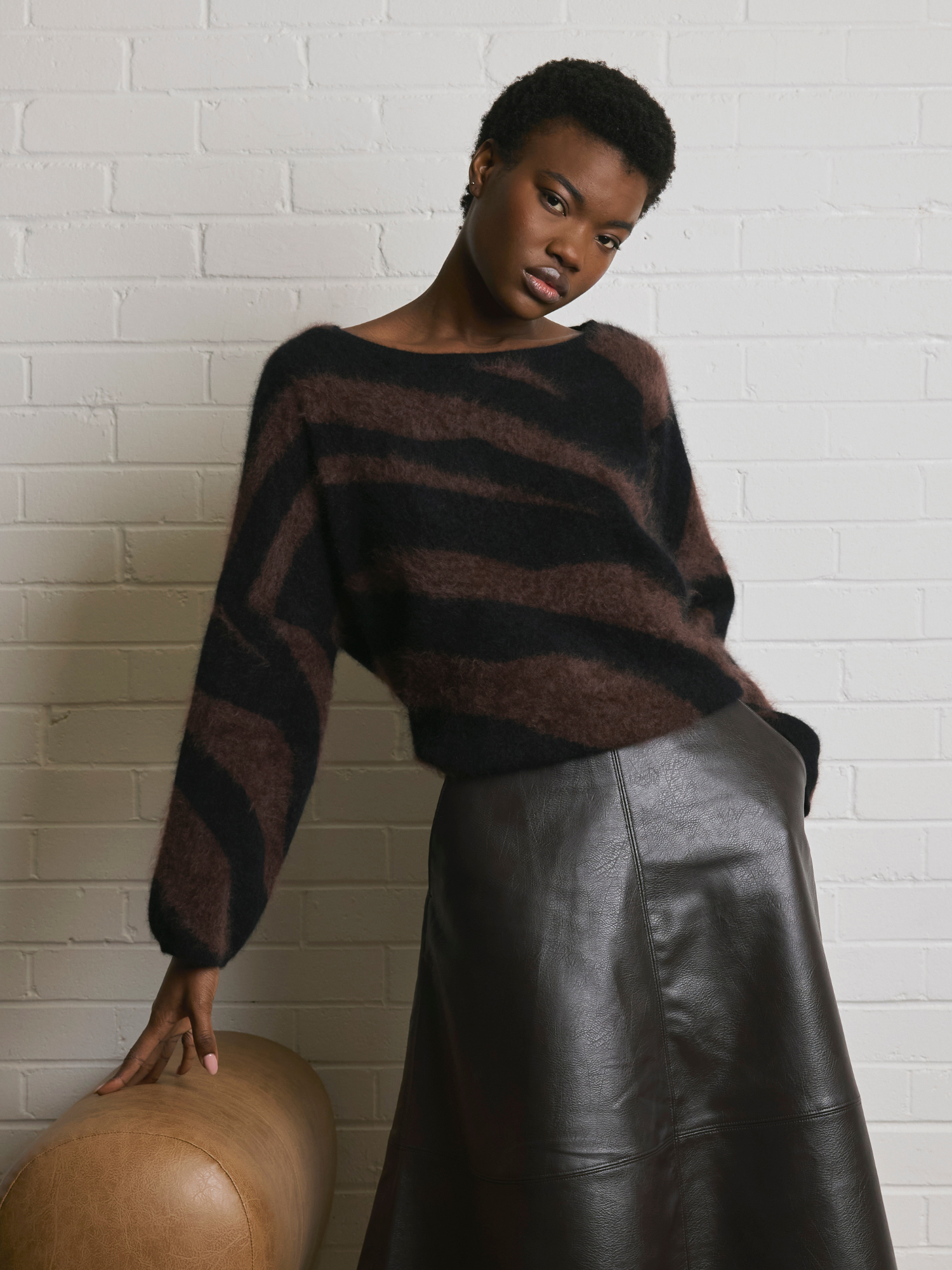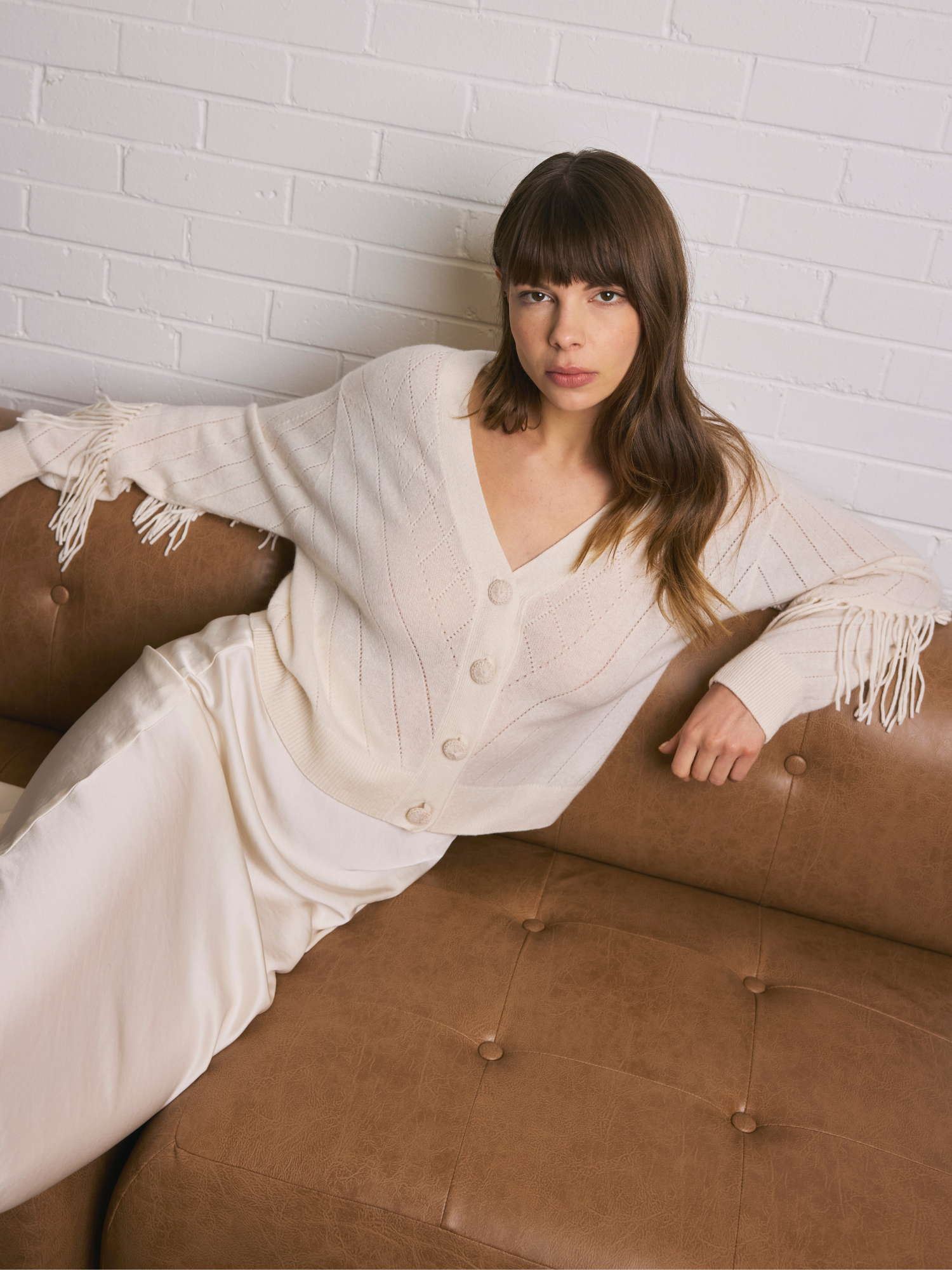
Your cashmere queries, answered.
We'll be going through the following:
- What is cashmere?
- How is cashmere made?
- What makes cashmere better than common wool?
- What is cashmere used for?
- Why is cashmere so expensive?
- What is the best quality cashmere?
- Is cashmere sustainable?
- Can you wear cashmere during the summer?
- Is cashmere production cruel?
- How do I care for my cashmere?
- Can I dry clean a cashmere sweater?
-
What is cashmere?
Cashmere is made from the fine undercoat of Cashmere goats (Capra hircus laniger), mostly found in Mongolia and China. Unlike wool, these hairs are hand-combed from the underbelly of the goats when they moult in the spring.

Our cashmere comes from Mongolia where 40m goats contend with temperatures below -30°C.
Their coat is made up of two distinct layers - the outer layer and the undercoat. The outer hair of the animal is coarse and waterproof, which serves to protect the undercoat. Only the soft, ultrafine undercoat is used in the production of cashmere.
In the spring, as they start to moult, the goats are combed to remove their fine under hair while leaving the outer coat (guard hair) intact. The combings are then washed and “de-haired” of any stray guard hair, so that what is left is pure cashmere.
Cashmere is soft, lightweight, and yet also very durable and a great insulator.
-
How is cashmere made?
In the winter month’s cashmere goats develop super soft fibres underneath their coat to protect them from the cold arid plains. As the month’s change and temperatures rise, cashmere goats will naturally shed their coat. Herdsmen then carefully comb out the fine hair by hand and send to local producers to be cleaned, refined and spun into yarn to create a gorgeous cashmere jumper.
-
What makes cashmere better than common wool?
Sheep’s wool is much coarser than cashmere wool, which causes the well-known itchy feeling that is felt when it is worn next to the skin. As cashmere is made from the very fine underbelly hair of cashmere goats, it is much softer on the skin. Not only this, but cashmere wool is eight times warmer than sheep’s wool, making it a cosy material for all our garments.
-
What is cashmere used for?
Cashmere is used to create yarn which can be woven into almost any garment or soft furnishing. It’s soft and insulating qualities mean cashmere is often used to create items of clothing such as jumpers and scarves which are perfect for when temperatures drop.

-
Why is cashmere so expensive?
The supply of cashmere is severely limited due to the tiny amount each cashmere goat can produce. Unlike sheep who can produce at least 3 kilos of wool, a cashmere goat will only produce around 200 grams. For example, it takes 2-3 goats’ hair to make one scarf, so if we were to comb just one goat it would take 4 years to produce that one scarf.
-
What is the best quality cashmere?
Types of cashmere vary a huge amount. As well as thickness of the hairs, the length of the goats hair can make a massive difference in your cashmere piece. Longer hairs form the best quality cashmere, as this prevents piling and misshaping of garments. At Brodie we use only the longest fibres, at 42mm.
-
Is cashmere sustainable?
Unlike polyester and other synthetics, cashmere is a natural fibre meaning its renewable and biodegradable. However, as the popularity for cashmere increases and with the material becoming more accessible to high street fashion brands, it is resulting in increased degradation of the grasslands.
To improve the impacts of cashmere production in Mongolia, we work closely with and are proud members the Sustainable Fibre Alliance (SFA).
Working closely with the SFA, we help to:
Preserve the pasture condition and water sources in order to maintain a healthy population of wildlife.
Nurture the lifestyle of the nomadic herders through educational programmes, range land training and better market access.
Ensure rangelands are managed in a way that minimises the risk of pasture degradation and protects wildlife.

-
Is cashmere fabric good for cold?
Cashmere fibres protect the cashmere goats from temperatures that drop below -30 degrees, meaning they make a great insulator for people too! Cashmere is one of the most cosiest and luxurious fabrics to wear all winter long.
-
Can you wear cashmere during the summer?
As cashmere is a natural fibre, it has the wonderful ability to regulate our temperature. In the winter, it will hold In body heat to keep us warm and in the summer the fibres absorb perspiration keeping us cool. During the summer months, we create a collection to include layered pieces, lighter weights and brighter palettes perfect for travelling on holiday or wearing when the sun begins to set.

-
Is cashmere production cruel?
At Brodie, we only work with the nomads of Mongolia who value traditional practice and the animals’ lives. Nomads hand-comb the underbelly of cashmere goats as they begin to moult in the spring, this can take up to five hours and doesn’t harm the animals. However, with the rise of fast fashion and increased pressure on production, some producers are moving away from traditional combing to shaving. This faster practice means the goats produce thinner fibres each year, lessening the goats’ value.
-
What can I do to ensure I am buying ethical cashmere?
Do your research and ensure you are buying cashmere from a brand with traceability and reputation as opposed to a fast fashion brand. High quality and cruelty free garments are usually more expensive. Opting for a high-quality cashmere piece encourages slow fashion and will hopefully result in a decrease in the amount of goats needed for production.
-
How long does cashmere last
A cashmere sweater is a wardrobe staple that will never go out of style. With the right love and care your cashmere piece should last a lifetime.

All of our cashmere is machine washable at 30 degrees (except for our foil print designs). Simply turn your garment inside out and choose the most delicate wash and spin cycle with non-biological washing detergent.
Our foils need to be hand washed! Turn your Brodie inside out and wash in cool water with non-biological detergent. Squeeze out the suds very gently and avoid running or wringing the garment.
It is important to dry your cashmere as soon as possible to avoid misshaping. Place on a flat drying rack to airdry.
Hangers will stretch your piece so neatly fold and store your cashmere safely (in a dry spot away from any moths).
-
Can I dry clean a cashmere sweater
As all of our pieces (apart from our foils) are machine washable, there is no need for dry cleaning! We know that dry cleaning releases toxic chemicals in the environment that persist for decades.




